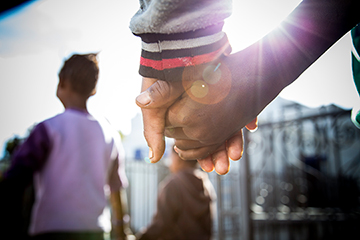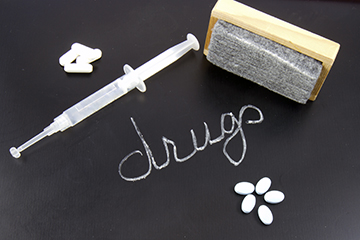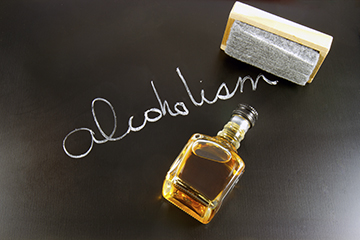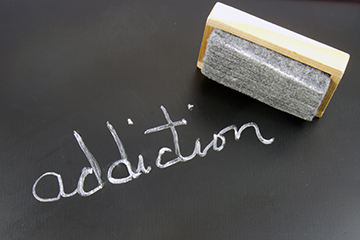Substance abuse and treatment in the Western Cape
Substance abuse remains a driver of crime in our communities, and threatens the social fabric of our province. The release of the crime statistics indicate the problem is on the rise. Of grave concern is the abuse of substances among young people.

There are 2 high risk periods for substance abuse in the growing years of a young person, namely:
- 13 to 14 years old - this period coincides with the physical changes of puberty, and
- At the transitional stages from late adolescence to early adulthood.
A Cape Town study indicated that adolescents first try either alcohol or cigarettes, followed by dagga (cannabis), then inhalants. Between the ages of 10 to 14 is often when risk-taking and unhealthy coping strategies are developed, for example substance abuse, and the joining of gangs. By the age of 13, one third of youth drinkers have already started, and 14% of cannabis users have started taking the drug regularly.
According to the Medical Research Council, the majority of individuals seeking treatment in the Western Cape are in their mid-20s and 85% percent of them are male.
With high numbers of young people exposed daily to poor decision making, you may not have access to many positive influences. But making positive lifestyle decisions is ultimately up to you. It might mean unlearning unhealthy behaviours and this process could take years. Studies show that young people are easily bored, and need regular engagement and incentives to keep them interested. There are many challenges facing the youth of today, but your choices affect you.
Informed by the Western Cape Youth Development Strategy, which was launched in 2014, our focus is around the warning signs of substance abuse and urging users to take back control.
Since April 2015, the Department of Social Development has treated 740 people through its 3 in-patient treatment centres (where treatment is provided at a treatment centre), along with 5 funded facilities. This figure includes adults, and children aged 13 to 18. In the same period, a total of 1 717 people received out-patient treatment (where they attended regular sessions at a community based treatment centre).
The top substances youth seek treatment for in the Western Cape are dagga, methamphetamine and heroin. When looking at the entire group including adults, the top 3 substances people seek treatment for is methamphetamine, dagga, and alcohol with heroin trailing.
The Department of Social Development funds 2 organisations to run the Matrix Teen programme in Eerste River, Kuilsriver and Steenberg. The outpatient treatment is a school-based pilot project with the capacity to reach 410 children per year. Based at schools, young people can access treatment with minimal disruption to their schoolwork.

Help is available and the first step starts with you. Here are some ways to get the support you need for a drug-free future:
- Educate yourself and others about the positive and negative effects of alcohol and drugs, the risk of substances, and what resources are available. Phone us on 0800 220 250, visit our treatment facilities, get brochures from your local clinic, your doctor or NGO’s.
- Make informed choices about your own use of mood-altering substances (for example, relax and have a good time without necessarily using alcohol, cigarettes or other substances), and address any problems you may experience.
- Discuss alcohol and other drug use openly with different people (no moralising, blaming or shaming). Let people explain their views, share your values and why you feel the way you do.
- Monitor yourself. Try to be aware of the ways in which you may be unintentionally making it easier for problems to continue.
- Get support and help for yourself by joining a support group. You will probably find many others in similar situations who can relate to your circumstances and provide a friendly environment in which to share.
How drugs can impact your life:

Using drugs can have many negative effects, including the following:
- You’re at risk of an overdose and even death because you don’t know what was used to manufacture the drug.
- Illegal drugs are mixed with harmful substances such as ammonia and rat poison that can have harmful effects on your health.
- Sharing needles and other objects puts you at risk of contracting diseases such as HIV/Aids.
- Using illegal drugs promotes production and trafficking of drugs.
- Small and large doses can lead to a drug addiction.
Learn to how to recognise different types of drugs
Learn how to identify different types of drugs. You could even end up helping a loved one, who may be hiding an addiction.
Use this table as a guide to identify 5 of the most commonly used drugs. Here’s what to look out for:
|
Type of drug: |
What it looks like: |
Signs of abuse: |
|
Cocaine |
White chrystal powder, chips, chunks or rocks. |
|
|
Methamphetamine |
White or slightly yellow crystal-like powder, large rock-like chunks. |
|
|
Marijuana |
A green or grey mixture of dried, shredded flowers and leaves of the hemp plant. |
|
|
Khat/sugars |
Leafy, flowery, green shrub. |
|
|
Heroin |
White or dark brown powder or tar like substance. |
|
Drug addiction treatment and recovery
Recovering from drug addiction can be challenging, but it’s not impossible. Not all addictive drugs look like drugs. According to the United Nations Get the Facts about Drugs guide, some substances that are addictive include caffeine (found in coffee or cola), nicotine (in cigarettes) and alcohol. Medicines such as painkillers are legal drugs that can also be abused.
School-based outpatient treatment programmes have been introduced at 4 pilot sites in Steenberg, Blue Downs, and Eerste River. Residential treatment programmes have been established at Horizon, Clanwilliam and Lindelani Child and youth care centres.
Help is only a phone call away
Remember that the first step to beating addiction is deciding that you want to change. Talk to someone before it's too late. If you need help please phone 0800 220 250.
Alcohol and you
South Africans are amongst the top 5 heaviest drinking nations in the world, with approximately 25-30% of drinkers consuming alcohol at risky levels.
The Western Cape is the drinking capital of South Africa and a global leader in alcohol-related harms including violence, road deaths, HIV and AIDS, TB and Foetal Alcohol Syndrome. Despite this, many South Africans remain under the illusion that the way they drink alcohol is acceptable, normal and even desirable.
If you're worried that you or a friend have a problem, don't wait to speak to someone. Call us now on 0800 220 250.
Watch Florence's story on how she beat her tik addiction
Subscribe to receive updates
Subscribe to our Substance Abuse and Treatment updates to receive more information about dealing with and overcoming drug and alcohol abuse. Your details will always remain confidential and will only ever be used to send you updates from the Western Cape Government.


